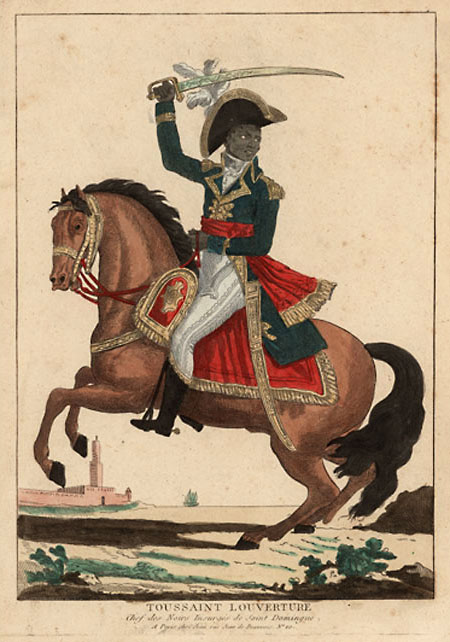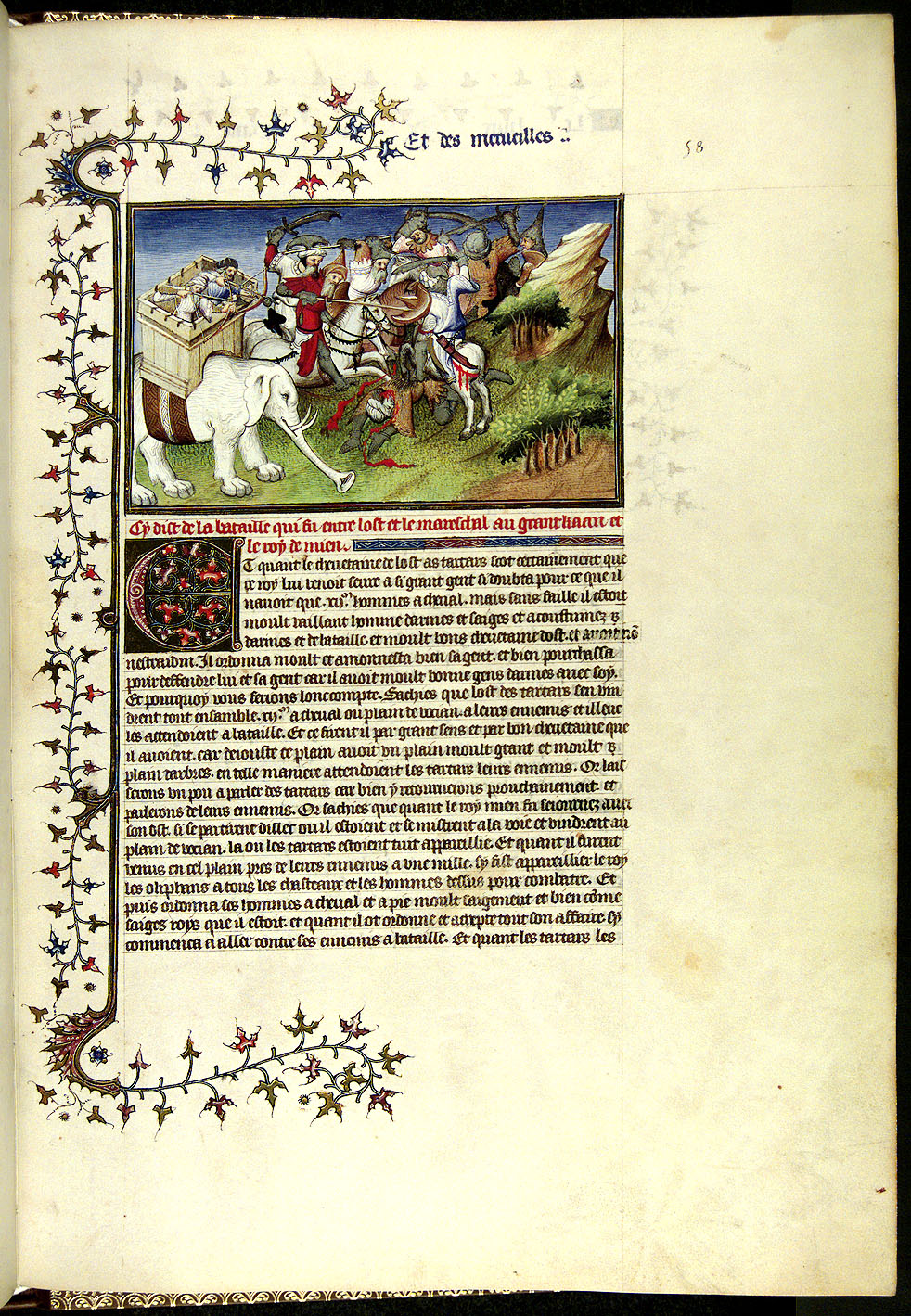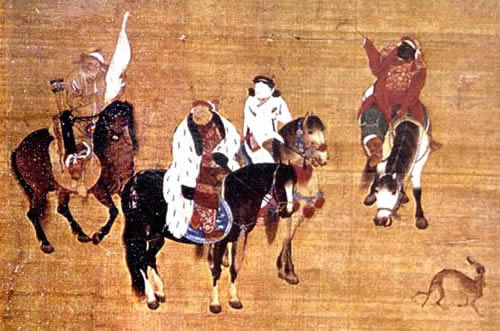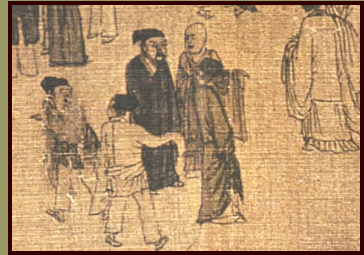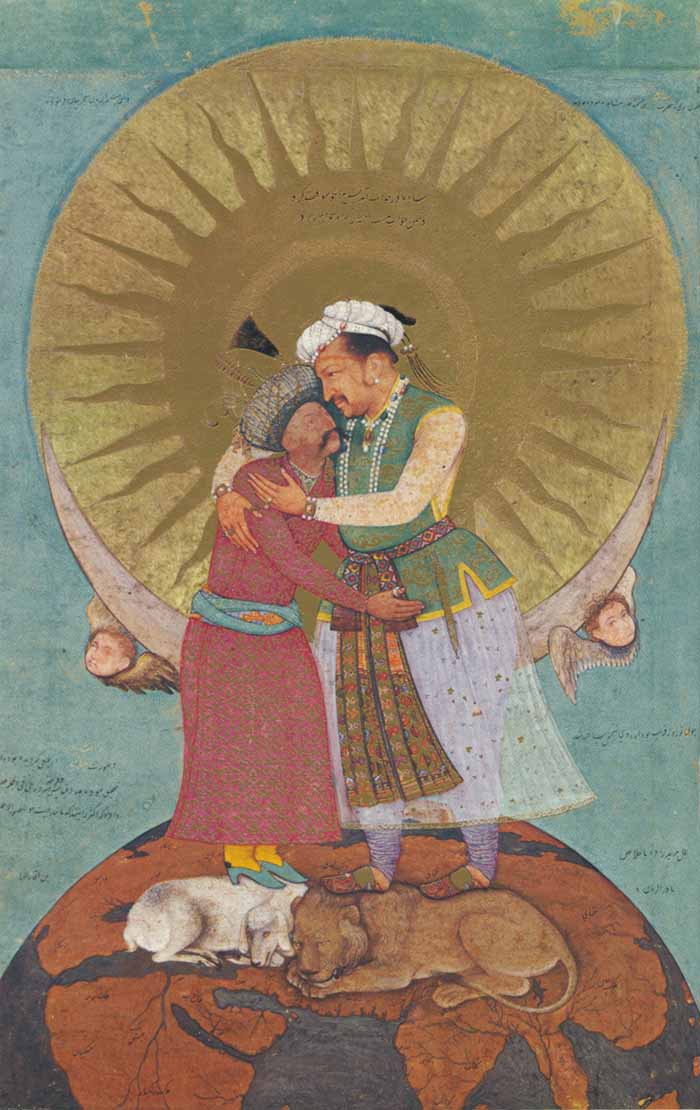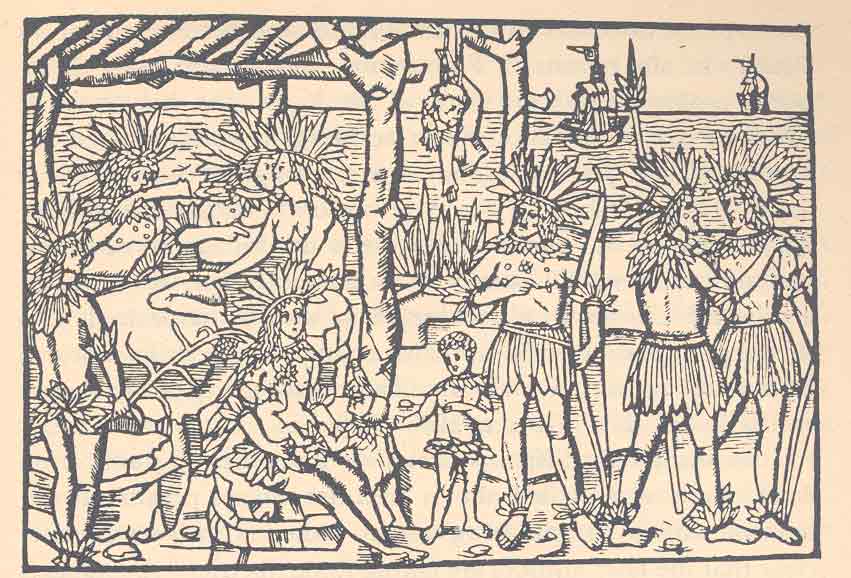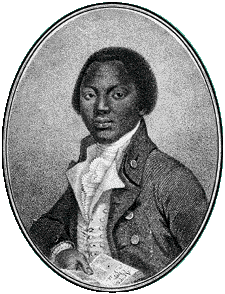Before Modern Civilization, 1200-1450 (What is the relation between pre-modern and modern civilizations? between nomadic societies and civilization?)
week 1. Society and Civilization; Early and Modern
- 9 Jan. Introduction
- 11 Jan. Fernand Braudel, “Afterthoughts on Material Life,” in Afterthoughts on Material Civilization and Capitalism (Baltimore: Johns Hopkins University Press, 1977), 3-15 (d2l)
- Travels of John Mandeville (c. 1366)
Marco Polo
- 16 Jan. WTWA, 394-401 (ch. 10); Introducing Stats Unit 1
- 18 Jan. WofH, ix-xiii; Fernand Braudel, “Afterthoughts on Material Life,” in Afterthoughts on Material Civilization and Capitalism, 16-35 (d2l); Introducing Stats Unit 1–Word Problem
Liu Kuan-tao (later 13th c.), Khubilai Khan on a hunt
week 3. China as a Pre-modern Civilization (Continuity & Change from Song to Ming Dynasties)
- 23 Jan. WTWA, 430-437, 470-473 (chs. 11-12); Stats Unit 1–Narrative Quiz; Stats Unit 1–Calculation Quiz due
- Song Dynasty (960-1279)
- Yuan Dynasty (Mongols, 1279-1368)
- Ming Dynasty (1368-1644)
- 25 Jan. WofH, ch. 15–source 1; Analyzing Primary Sources, based on Mark Kishlansky, “How to Read a Document,” in Sources of the West (1995); Stats Unit 1–Word Problem
Song dynasty, scholar and monk converse
Europe and the Gunpowder Empires, 1450-1700 (What is the relation between arms and politics? between Church and State?)
week 4. Islamic Gunpowder Empires (Ottoman, Safavid, Mughal)
- 30 Jan. WTWA, 404-421, 468-470 (chs. 11-12); Introducing Stats Unit 2
- 1 Feb. WofH, ch. 17–sources 5-6 (The Akbarnama, 1596; “Memoirs of the Emperor Jahangueir,” c. 1625); Introducing Stats Unit 2–Word Problem
- Turkish Letters of de Busbecq (a review)
- John Chardin (biography, on campus link)
- Nur ud-Din Jahangir (pictures)
Jahangir's dream of embracing Shah 'Abbas
Taj Mahal mausoleum built by Mughal Emperor Shah Jahan, mid-17th century
week 5. Early and Modern in European Renaissance & Reformation
- 6 Feb. WTWA, 404-407, 421-430, 462-468 (chs. 11-12); Stats Unit 2–Narrative Quiz; Stats Unit 2–Calculation Quiz due
- 8 Feb. WofH, ch. 17–source 4 (“European Faiths and States, 2007); The Prince (c. 1513, d2l); Stats Unit 2–Word Problem due
- Italy (map)
- Machiavelli, On Composing the Prince
- Machiavelli, The Prince
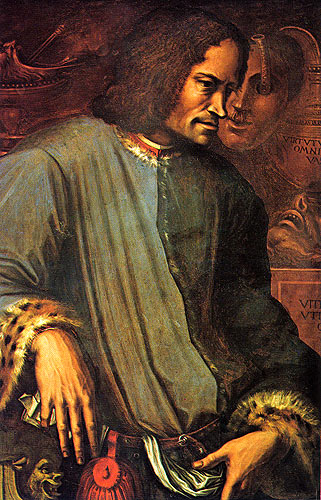 Lorenzo il Magnifico, 1449-1469-1492
Lorenzo il Magnifico, 1449-1469-1492
week 6. Europe: New Monarchies
- 13 Feb. Review (note: class begins @ 10:00
- 15 Feb. EXAM 1; (Mentorship Report due 17 Feb.)
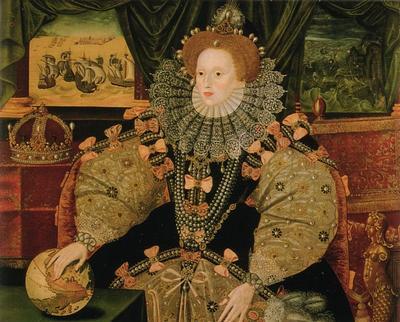 Queen Elizabeth, Armada Portrait
Queen Elizabeth, Armada Portrait
week 7. Old World and the New World
- 20 Feb. WTWA, 440-462 (ch. 12); Introducing Stats Unit 3
- 22 Feb. NO CLASS, HISTORY CAREERS DAY. Stats Unit 3–Narrative Quiz; Stats Unit 3–Calculation Quiz due
- Ma Huan "The Overall Survey of the Ocean's Shores" (1433)
- Journal of the First Voyage of Vasco da Gama to India, 1497−1499 (excerpts and original)
- Letter to Ferdinand and Isabella from C. Columbus (1493)
Earliest European woodcut of the New World
From Wars of Religion to Wars of Trade, 1555-1763 (Did early modern wars in Europe make sense? Why did Europe expand?)
week 8. War, Trade, and Empire, part 1
- 27 Feb. WTWA, 476-488, 510-515 (ch. 13); WofH, ch. 15–sources 3-4 (“Journal of the First Voyage of Vasco da Gama,” 1498; “Letter to King Ferdinand and Queen Isabella,” 1493); Stats Unit 3–Word Problem due
- 1 March WofH, ch. 16–sources 1-2 (“Conquest of New Spain,” c. 1560; “the Aztec Account of the Conquest of Mexico,” c. 1540s); Introducing Stats Unit 4
- War
- Empire
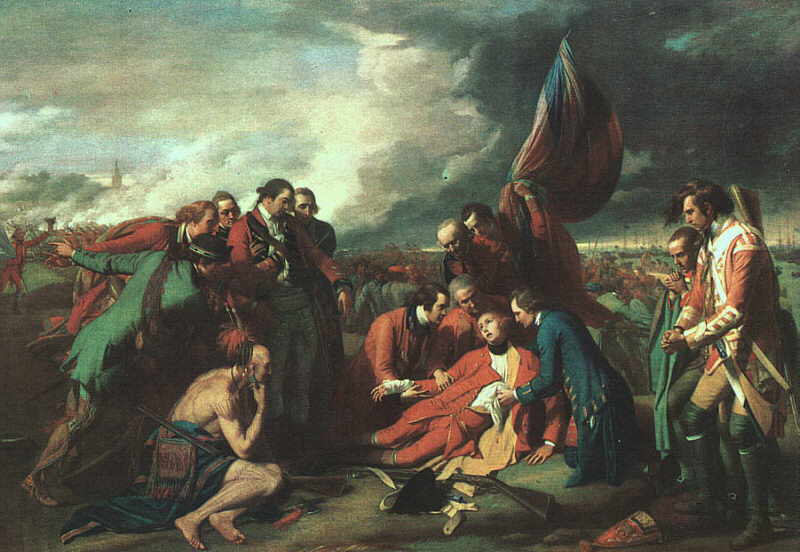 Benjamin West, The Death of Wolfe, 1770
Benjamin West, The Death of Wolfe, 1770
week 9. War, Trade, and Empire, part 2: Europe and East Asia
- 6 March WTWA, 495-510 (ch. 13); Comparative Sources Essay due
- Trade
- Antwerp Stock Exchange ca. 1650
- Triangle trade (Atlantic)
- John Law's Mississippi Company (France)
- South Sea Bubble (Britain)
- Trade
- 8 March Stats Unit 4–Narrative Quiz; Stats Unit 4–Calculation Quiz due
week 10. Africa and the Atlantic World
- 20 March WTWA, 488-495 (ch. 13); Stats Unit 4–Word Problem due
- 22 March WofH, ch. 16–sources 4-5 (“Appeal to the King of Portugal,” 1526; “Buying Slaves in 1693"); Introducing Stats Unit 5
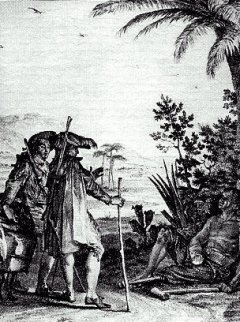 Candide in Surinam
Candide in Surinam
week 11. Culture and Science in the 17th and 18th centuries
- 27 March WTWA, 518-537 (ch. 14); Stats Unit 4–Word Problem (due 2 April)
- 29 March WofH, ch. 19, sources 1-7
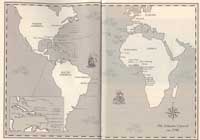 18th-Century Atlantic World
18th-Century Atlantic World
week 12. Slave Trade, Slave Societies
- 3 April WTWA, 542-546, 571-573 (chs.14-15); Stats Unit 5–Word Problem due
- Equiano, Interesting Narrative
- title page; epistle dedicatory; ch. 1; ch. 2
- Q & A with Equiano's biographer
- Caribbean Views from British Library
- Hear the Interesting Narrative
- Olaudah Equiano, or, Gustavus Vassa, the African
- Equiano's Travels (map)
- Equiano, Interesting Narrative
- 5 April Exam 2
Olaudah Equiano, or, Gustavus Vassa, the African
Liberty and Terror at the Advent of Modernity, 1763-1799 (What is the relation between revolution and civilization?)
week 13. The Enlightenment Project
- 10 April (note: class begins @ 10:00) WTWH, 538-542, 546-551 (ch. 14)
- 12 April WofH, ch. 20–sources 1 & 3 (“On Miracles,” 1748; “American Declaration of Independence,” 1776); ch. 21–source 3; Introducing Slave Trade Group Paper
- Encyclopédie 1, 2, 3
- Salons 1, 2
- Enlightened Despotism
- European Enlightenment
- Revolutionaries (sign-up)
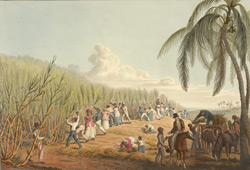 Cutting the Sugar Cane, from 'Ten Views in the Island of Antigua', 1823
Cutting the Sugar Cane, from 'Ten Views in the Island of Antigua', 1823
week 14. Age of Revolution(s): France, Europe, the World
- 17 April WTWA, 551-571 (ch. 15); Slavery & Freedom brief essay (TBD) due
- 20 April WofH, ch. 20–sources 4-719 April WofH, ch. 20–sources 5-7 (“French Declaration of Rights of Man and Citizen,” 1789; “French Declaration of Rights for Women,” 1791; “Letter to the Directory,” 1797)
- (de Gouges & Robespierre)
- Bertrand Barère, Babeuf's Trial, Marquis de Condorcet, Charlotte Corday, George-Jacques Danton, Camille Desmoulins, Hébertistes, marquis de Lafayette, Toussaint L'Ouverture, Jean-Paul Marat, Marie-Antoinette, Duc d'Orléans, Girondists, Maximilien Robespierre, Madam Roland, Saint-Just, Jacobins & Sans Culottes
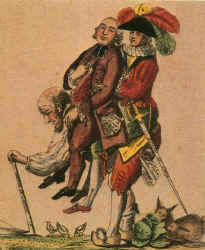
week 15. Birth of the Modern
- 24 April WTWA, 590-591 (ch. 15); Slave Trade Group Paper due
- 26 April Conclusion
- 30 April (Monday), 10:15-12:15 pm Final Exam
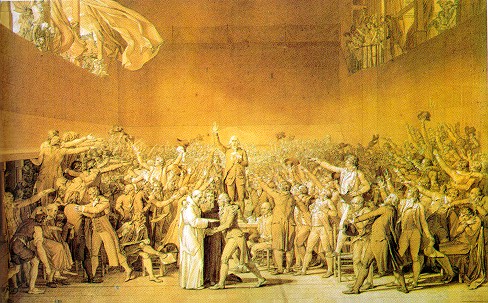 David, Tennis Court Oath
David, Tennis Court Oath
- WofH. Kevin Reilly, ed., Worlds of History: A Comparative Reader, vol. 2, Since 1400, 6th ed. (Boston: Bedford/St. Martin’s, 2017) [TRS # 11.243]
- WTWA. Robert Tignor, et al., Worlds Together, Worlds Apart, vol. B, 600 to 1850, 4th ed. (New York: W W Norton and Co, 2014) [TRS # 11.244]
